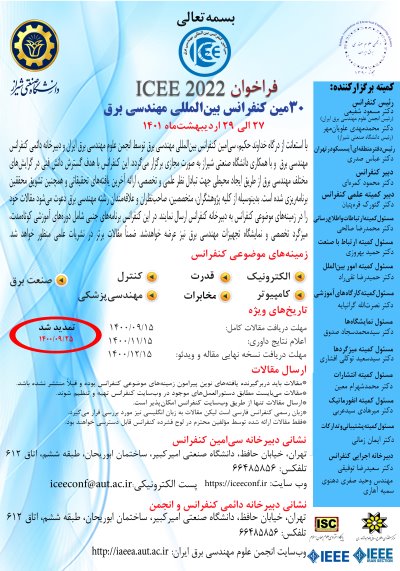0% Complete

نویسندگان :
کلمات کلیدی :
چکیده :
لیست مقالات بایگانی شده
Sina Rezaeeahvanouee - Javad Ghalibafan
MohammadHadi Firouzi - Maliheh Ahmadi - Kamran Kazemi - Mohammad Sadegh Helfroush - Ardalan Aarabi
Neda Mazloomi - Sajad Haghzad Klidbary
امیرعلی نسیمی - مهران صفایانی - مائده احمدی - عبدالرضا میرزائی
Zahra Moradi- Shahrbabak
Mohammadali Ghadiri-modarres - Mohsen Mojiri - Ehsan Fattahi
Mohammad Hossein Shaabani - Behrooz Vahidi - Navid Dehghan
سعید انصاری - حیدر صامت - تیمور قنبری
علی ضیائی - رضا قاضی - روح الامین زینلی داورانی
Saeed Mahdavian Rostami - Mohsen Hamzeh





